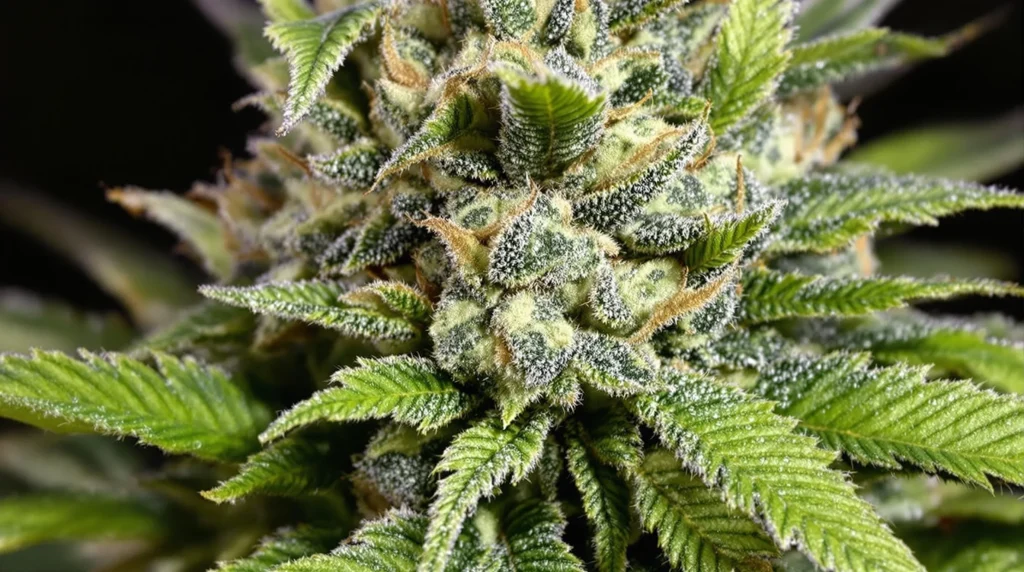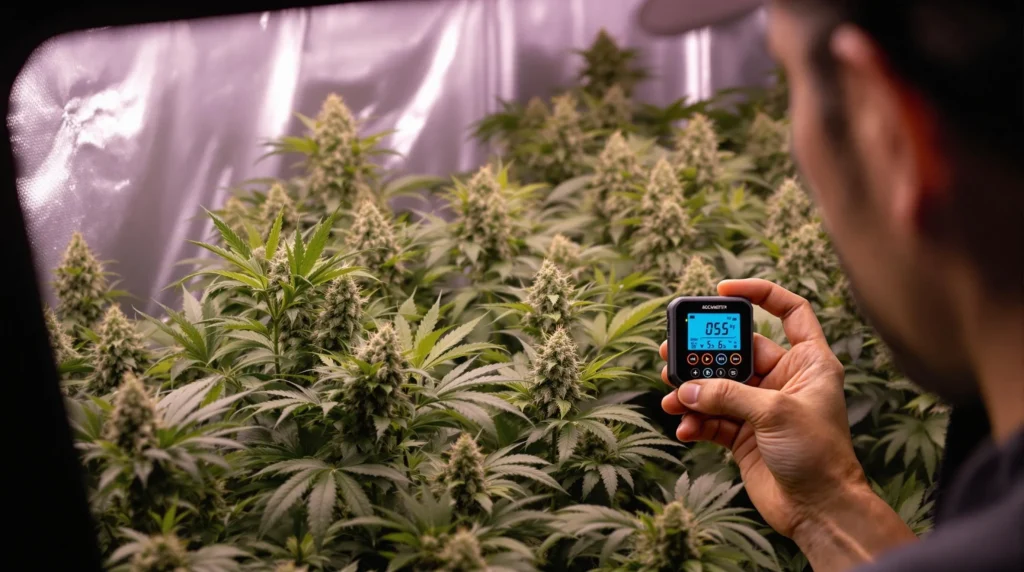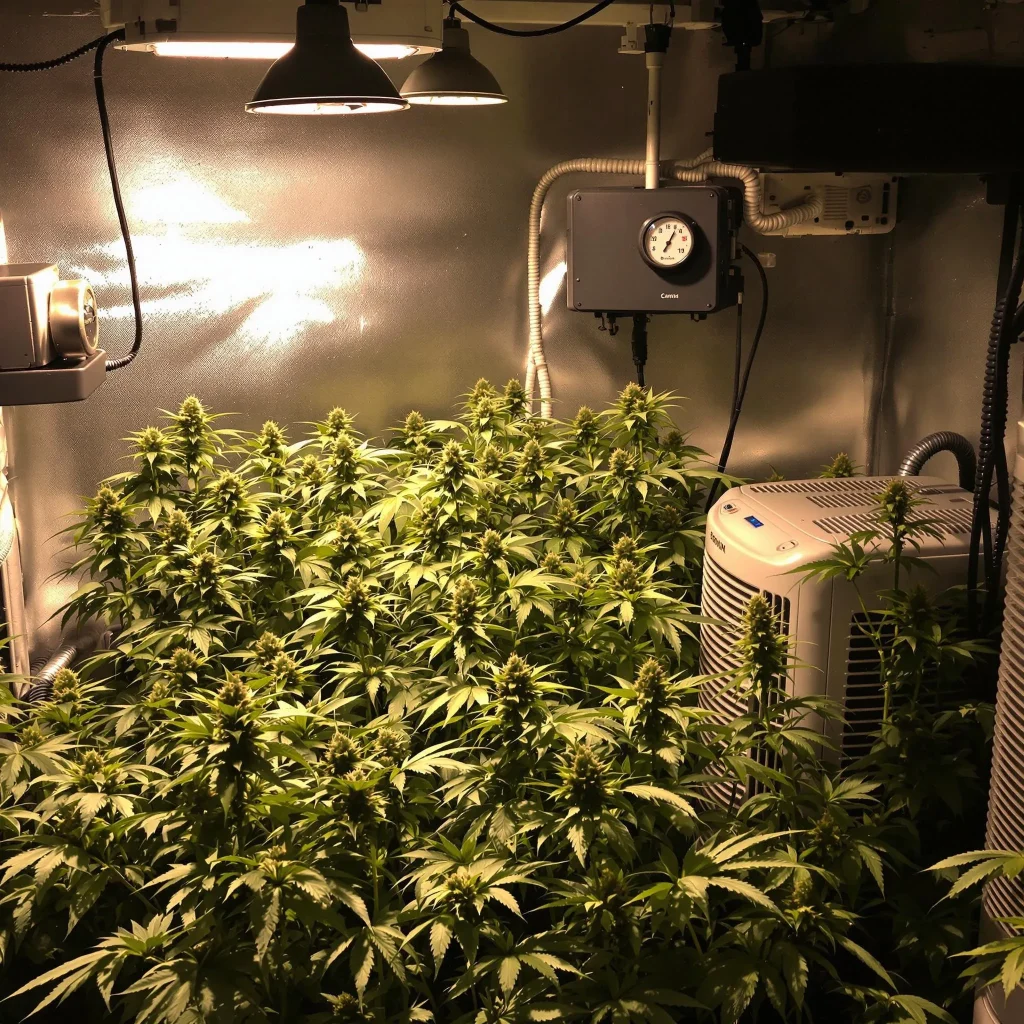Imagine nurturing your cannabis plants for weeks, only to face issues during the crucial flowering stage. Humidity plays a pivotal role in this phase, and understanding its impact can make the difference between a bountiful harvest and a disappointing yield. So, what is the best humidity for the flower stage? Let’s delve into this essential aspect of cannabis cultivation and explore how to maintain optimal conditions for your plants.
Why Humidity Matters During the Flower Stage
Humidity refers to the amount of moisture in the air, and during the flowering stage of cannabis, maintaining appropriate levels is vital. This stage is when plants focus their energy on producing buds, which are highly sensitive to environmental factors. Too much moisture can lead to mold and mildew, while too little can stress the plants, causing slower development and reduced yields.
Balancing humidity ensures healthy bud development and prevents potential issues that could compromise your crop. Proper humidity also supports the plant’s transpiration process, allowing it to absorb nutrients efficiently and produce high-quality flowers. By controlling humidity, you set the stage for dense, resinous buds with optimal flavor and potency.
Ideal Humidity Levels for Flowering Cannabis
For optimal results, aim for a relative humidity (RH) between 40% and 50% during the flowering stage. This range helps prevent mold growth while supporting proper transpiration. As harvest approaches, consider gradually lowering humidity to around 30-40%. This reduction not only protects the buds from excess moisture but also enhances resin production, giving your harvest a sticky, potent finish.
Maintaining the best humidity for the flower stage is especially important for indoor growers, where environmental control is key. Outdoor growers may face more challenges, but using techniques like proper spacing and selecting strains suited to the local climate can help mitigate issues caused by humidity fluctuations. Learn which cannabis plants thrive in warm and humid conditions
How Humidity Affects Bud Development
Humidity directly influences bud quality and development. High humidity levels can cause buds to retain excess moisture, creating a breeding ground for mold and mildew. This is particularly concerning for dense buds, where airflow is limited, and moisture becomes trapped. Bud rot, a devastating condition, often results from excessive humidity and can ruin an entire crop if left unchecked.
On the other hand, low humidity can lead to overly dry buds, which may lose essential oils, terpenes, and cannabinoids. This not only affects the flavor and aroma but also diminishes the overall potency of the buds. Maintaining the right humidity ensures dense, resinous buds with robust terpene profiles, creating a product that stands out in both quality and appeal.
Maintaining Optimal Humidity in the Flower Stage
Achieving and maintaining the best humidity for the flower stage requires careful monitoring and control. Utilizing the right tools and techniques can help create a stable environment that supports your plants’ needs.
Tools for Measuring and Controlling Humidity
Investing in reliable tools is essential for accurate humidity management. A high-quality hygrometer allows you to monitor RH levels in real time. Pair this with a digital thermometer for temperature control, as temperature and humidity are closely linked. Advanced climate control systems, such as those found in grow tents or automated grow rooms, can help maintain consistent conditions without constant manual adjustments.
Using dehumidifiers is crucial for removing excess moisture during the flowering stage. These devices work by extracting water from the air, lowering RH levels effectively. Similarly, a humidifier can be used to increase humidity if the air becomes too dry, ensuring your plants remain within the optimal range.
Tips for Reducing Humidity in the Grow Room
- Ventilation: Ensure proper airflow by using exhaust fans to expel moist air and bring in fresh air. This prevents humidity buildup and reduces the risk of mold.
- Air Conditioning: Air conditioners can help regulate both temperature and humidity, creating a stable environment for flowering plants.
- Watering Practices: Water plants at the start of the light cycle to allow excess moisture to evaporate during the day, preventing spikes in humidity at night.
- Plant Spacing: Avoid overcrowding your grow area. Proper spacing ensures adequate airflow between plants, reducing moisture retention.
- Inspect for Leaks: Regularly check for standing water or leaks in your grow room, as these can contribute to increased humidity levels.
Avoiding Excessive Humidity During Flowering
To prevent excessive humidity, it’s essential to maintain proper airflow throughout your grow space. Oscillating fans can help distribute air evenly, reducing stagnant pockets where moisture can accumulate. Using carbon filters can also improve air quality, preventing the spread of mold spores and other contaminants. Regularly inspect your plants for early signs of mold or mildew, such as discolored spots or a musty odor. Catching these issues early allows for timely intervention, protecting your crop and maintaining optimal conditions.

Effects of Improper Humidity Levels
Failing to maintain the best humidity for the flower stage can have detrimental effects on your cannabis plants. Understanding the risks associated with both high and low humidity can help you take proactive steps to protect your crop.
Risks of High Humidity in the Flower Stage
High humidity levels can create a perfect environment for mold and mildew, particularly bud rot. This condition starts inside the dense buds, making it difficult to detect until significant damage has occurred. Pests such as spider mites and fungus gnats also thrive in humid conditions, posing additional threats to your plants.
Excessive humidity can also disrupt the plant’s transpiration process, leading to nutrient imbalances and reduced growth rates. Ensuring proper ventilation and monitoring RH levels consistently are key to avoiding these problems.
How Low Humidity Can Impact Cannabis Buds
While low humidity reduces the risk of mold, it can stress your plants if levels drop too far. Plants may transpire excessively, leading to nutrient deficiencies and slowed growth. Buds exposed to overly dry conditions can become brittle, losing valuable terpenes and cannabinoids that contribute to their potency and flavor.
Maintaining balanced humidity ensures that your plants remain healthy and productive throughout the flowering stage. Providing consistent moisture levels prevents unnecessary stress and supports optimal bud development.
Common Signs of Humidity Problems
Be vigilant for signs of humidity-related issues, such as:
- Wilting: This can indicate excessive transpiration caused by low humidity.
- Moldy Spots: Visible mold on buds or leaves signals high humidity and poor airflow.
- Yellowing Leaves: This may result from nutrient imbalances caused by improper transpiration.
- Musty Odors: A strong smell in your grow room often points to mold or mildew.
Addressing these symptoms promptly can save your plants and ensure a successful harvest.
Balancing Humidity with Other Growing Conditions
Humidity management doesn’t exist in isolation; it’s part of a larger system of environmental control. Balancing humidity with temperature, airflow, and other factors is essential for healthy plant growth.
The Relationship Between Temperature and Humidity
Temperature and humidity are closely connected. Warmer air holds more moisture, so as temperatures rise, RH levels can increase. During the flowering stage, aim to keep daytime temperatures between 65-84°F (18-29°C). Adjusting humidity to match these conditions ensures that your plants can transpire efficiently and absorb nutrients effectively.
Air Circulation and Its Role in Humidity Control
Proper air circulation is vital for preventing stagnant air pockets where moisture can build up. Oscillating fans help distribute air evenly throughout the grow space, reducing the risk of mold and promoting healthy plant growth. Ensure that airflow reaches all parts of your plants, including the lower canopy, for comprehensive humidity control.
Using Dehumidifiers and Humidifiers Effectively
Dehumidifiers are essential tools for managing excessive humidity, especially during late flowering when the risk of mold is highest. Choose a dehumidifier sized appropriately for your grow room and monitor its performance regularly. Similarly, a humidifier can be used to maintain adequate moisture levels in overly dry environments, ensuring your plants remain within the optimal RH range.

FAQs About Humidity in the Flower Stage
What is the best humidity range for flowering cannabis?
The best humidity for the flower stage is between 40% and 50%. This range supports proper transpiration and helps your plants absorb nutrients effectively. As the flowering stage progresses, lowering the humidity to 30-40% during the final weeks can enhance resin production and reduce the risk of mold. Maintaining these levels ensures optimal bud development and a high-quality harvest.
Can high humidity lead to mold during the flower stage?
Yes, high humidity is one of the leading causes of mold during the flower stage. Mold, especially bud rot, thrives in environments with excess moisture and poor airflow. Dense buds are particularly susceptible because they can trap moisture inside. To prevent mold, monitor humidity levels regularly and ensure proper air circulation using oscillating fans and exhaust systems.
How often should I monitor humidity during flowering?
Humidity should be checked at least twice a day—once during the light cycle and once during the dark cycle. Conditions can change rapidly, especially in enclosed grow spaces, so regular monitoring helps maintain a consistent environment. Using automated systems like hygrometers connected to climate controllers can simplify this process and provide real-time alerts for any fluctuations.

